Related Research Articles
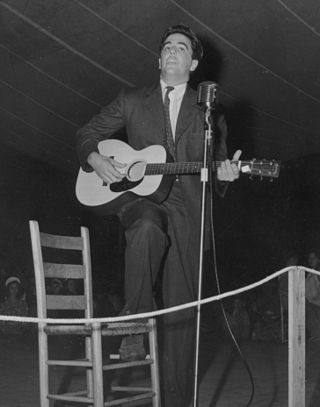
Alan Lomax was an American ethnomusicologist, best known for his numerous field recordings of folk music of the 20th century. He was a musician, folklorist, archivist, writer, scholar, political activist, oral historian, and film-maker. Lomax produced recordings, concerts, and radio shows in the US and in England, which played an important role in preserving folk music traditions in both countries, and helped start both the American and British folk revivals of the 1940s, 1950s, and early 1960s. He collected material first with his father, folklorist and collector John Lomax, and later alone and with others, Lomax recorded thousands of songs and interviews for the Archive of American Folk Song, of which he was the director, at the Library of Congress on aluminum and acetate discs.

Conrad Nicholson "Nicky"Hilton Jr. was an American socialite, hotel heir, and businessman. He was the eldest son of Hilton Hotels founder Conrad Hilton and the first husband of actress Elizabeth Taylor.

Grace Paley, née Goodside was an American short story author, poet, teacher, and political activist.

Věra Chytilová was an avant-garde Czech film director and pioneer of Czech cinema. Banned by the Czechoslovak government in the 1960s, she is best known for her Czech New Wave film Sedmikrásky (Daisies). Her subsequent films screened at international film festivals, including Vlčí bouda (1987), which screened at the 37th Berlin International Film Festival, A Hoof Here, a Hoof There (1989), which screened at the 16th Moscow International Film Festival, and The Inheritance or Fuckoffguysgoodday (1992), which screened at the 18th Moscow International Film Festival. For her work, she received the Ordre des Arts et des Lettres, Medal of Merit and the Czech Lion award.
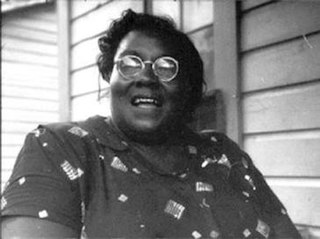
Adell Hall Ward, better known as Vera Hall, was an American folk singer, born in Livingston, Alabama. Best known for her 1937 song "Trouble So Hard", she was inducted into the Alabama Women's Hall of Fame in 2005.
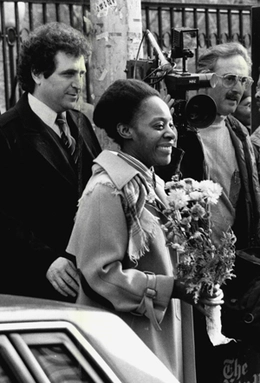
Joyce Patricia Brown, also known as Billie Boggs, was a homeless woman who was forcibly hospitalized in New York City in 1987. She was the first person hospitalized under a Mayor Ed Koch administration program which expanded the city's ability to forcibly commit homeless New Yorkers to psychiatric hospitals. Between 1987 and 1988, Brown worked with the New York Civil Liberties Union to challenge her hospitalization in a case which attracted significant media attention. During the ensuing trial, her lawyers argued that her behaviors were not in line with social expectations but did not rise to the level of posing a danger to herself or others. Brown took the stand, and her clarity while testifying became part of the public conversation. The trial ended in her favor, and while the city won on appeal she was ultimately released after a subsequent case determined that the city could not forcibly medicate her. Following her release, she made several television appearances and spoke about homelessness at Harvard Law School, but came to avoid the press. Her case sparked national conversations about how best to care for the people with mental illnesses.

Vera Huppe Maxwell was an American pioneering sportswear and fashion designer.

Per Scholas is an American nonprofit organization based in The Bronx, New York City founded in 1995 by John Stookey and Lewis Miller. Per Scholas provides tuition-free technology training to unemployed or underemployed adults for careers as IT professionals. It has 21 educational locations throughout the United States as of 2023.

Roberta Smith is co-chief art critic of The New York Times and a lecturer on contemporary art. She is the first woman to hold that position.
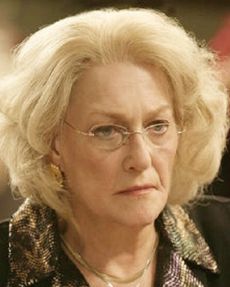
Sadie Gertrude Stern, known professionally as Suzanne Shepherd, was an American actress and theater director.
Elizabeth Monroe Boggs was an American policy maker, scholar, and advocate for people with developmental disabilities. The University of Medicine and Dentistry of New Jersey named "The Elizabeth M. Boggs Center on Developmental Disabilities" in late 1997 in her honor.
Henrietta Yurchenco was an American ethnomusicologist, folklorist, radio producer, and radio host. She worked to save traditional music by recording in Guatemala, Mexico, the United States, and Morocco.
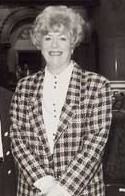
Elizabeth Ann "Betty" Connelly was a politician from Staten Island, New York who represented the North Shore community from 1973 to 2000. She was the first woman to win elective office to any district encompassing Staten Island.
Anna Lomax Wood is an American anthropologist, ethnomusicologist and public folklorist. She is the president of the Association for Cultural Equity (ACE), established in 1985 by her father, musicologist Alan Lomax, at Hunter College, CUNY.

Chirlane Irene McCray is an American writer, editor, and activist. She is married to former New York City Mayor Bill de Blasio and had been described as de Blasio's "closest advisor." She chaired the Mayor's Fund to Advance New York City and was appointed by her husband to lead a billion-dollar initiative called ThriveNYC. She has also published poetry and worked in politics as a speechwriter.
Melissa Freeman is a Bronx-born physician based at the Beth Israel Medical Center.
Overlooked No More is a recurring feature in the obituary section of The New York Times, which honors "remarkable people" whose deaths had been overlooked by editors of that section since its creation in 1851. The feature was introduced on March 8, 2018, for International Women's Day, when the Times published fifteen obituaries of such "overlooked" women, and has since become a weekly feature in the paper.
Chinazo D. Opia Cunningham is a physician, researcher, and Professor of Medicine at Albert Einstein College of Medicine in New York City. She is also the Director of Diversity Affairs for the Department of Medicine. She worked on the frontlines during the HIV/AIDS crisis in San Francisco and in 2020 began working on the frontlines of the Coronavirus disease 2019 (COVID-19) pandemic in New York City. She also specializes in treating patients with addiction, overseeing a network using buprenorphine to treat people with opioid addiction.

Hester Diamond was an American art collector, dealer, and interior designer. With her first husband, Harold Diamond, she amassed a collection of Modernist art that the New York Times described as "astonishing". Following her husband's death, Diamond switched her focus to Old Masters, assembling "one of the greatest, most idiosyncratic art collections in America". She was the mother of Mike D of the Beastie Boys.
Herminia Palacio is an American nonprofit executive who was formerly CEO of the Guttmacher Institute. She formerly served as Deputy Mayor of New York City for Health and Human Services under Bill de Blasio from 2016 to 2019.
References
- 1 2 3 4 5 6 7 8 9 10 11 12 13 14 15 16 17 18 19 Martin, Douglas (2010-10-22). "Elizabeth L. Sturz, Salvaged Troubled Lives, Dies at 93". The New York Times. ISSN 0362-4331 . Retrieved 2023-11-02.
- ↑ Family style. Austin: University of Texas Press. 2009. ISBN 978-0-292-71930-9.
- 1 2 Flynn, Carolyn (2009). Sisters singing : blessings, prayers, art, songs, poetry and sacred stories by women. Santa Cruz, Calif.: Wild Girl Publishing. ISBN 978-0-9728146-2-1.
- 1 2 3 Howard, Jane (1984-01-29). "YOUTH OF THE SOUTH BRONX". The New York Times. ISSN 0362-4331 . Retrieved 2023-11-02.
- 1 2 3 4 5 6 7 8 9 10 11 12 13 14 15 16 17 18 19 20 21 Szwed, John F. (2010). Alan Lomax : the man who recorded the world. New York: Viking Penguin. ISBN 978-0-670-02199-4.
- ↑ Hall, Stephanie (2015-12-17). "Songs for Christmas and the New Year Collected by Alan Lomax | Folklife Today". The Library of Congress. Retrieved 2023-11-02.
- ↑ Russonello, Giovanni (2017-07-11). "The Unfinished Work of Alan Lomax's Global Jukebox". The New York Times. ISSN 0362-4331 . Retrieved 2023-11-02.
- ↑ "Lead Belly/Lomax Chronology | Association for Cultural Equity". The Association for Cultural Equity. Retrieved 2023-11-02.
- 1 2 Foderaro, Lisa W. (1993-04-08). "Bronx Refuge for Doubly Troubled Addicts". The New York Times. ISSN 0362-4331 . Retrieved 2023-11-02.
- 1 2 3 Sturz, Elizabeth Lyttleton (1983). Widening circles. New York: Harper & Row. ISBN 978-0-06-015109-6.
- ↑ "Paid Notice: Deaths STURZ, ELIZABETH LYTTLETON". New York Times . 28 October 2010. p. 31.